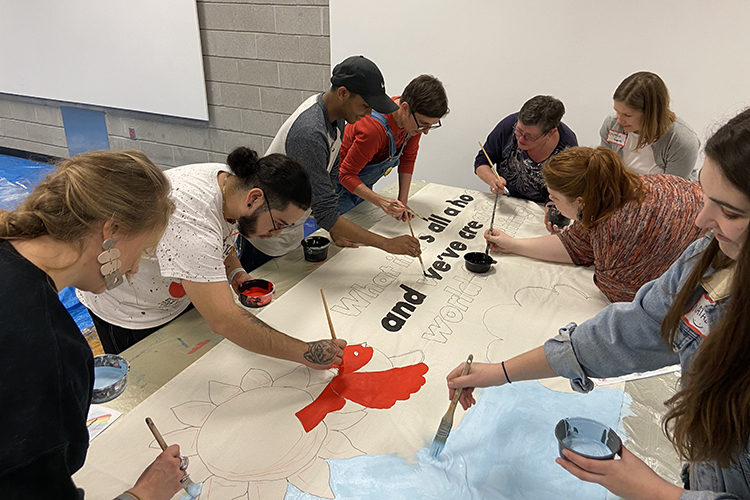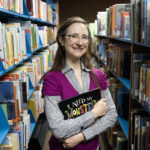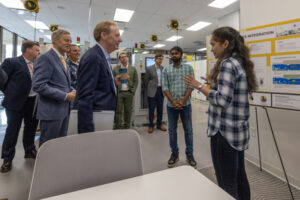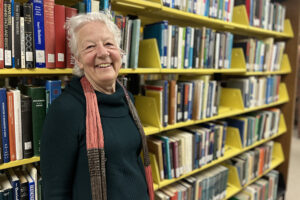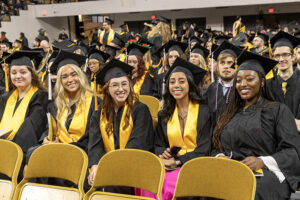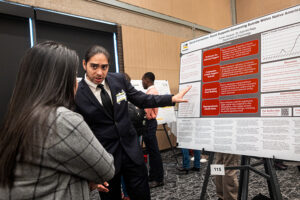Tania Espinoza Bonilla looks at all of the new murals sparked by the Black Lives Matter movement and not only appreciates the artwork’s direct messages, but also sees a deeper meaning.
“Art is a really special way of bringing people together, to join them in something they feel is important and should be shared,” the UWM alumna said.
It’s an example of the lessons Bonilla learned through UWM’s ArtsECO program while working toward her 2019 bachelor’s degree in fine arts and teaching certification.
ArtsECO – which stands for Arts Education/Community Ecosystem – supports teaching through the arts, placing a particular focus on social justice and the concept of developing teachers as changemakers. Funded through the Margaret A. Cargill Philanthropies, ArtsECO has 15 sites in Wisconsin, and UWM hosts the largest of those.
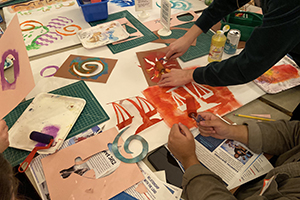
Kim Cosier, an art education professor and director of community engagement for the Peck School of the Arts, helps lead the program at UWM. “The idea is to pair a school system with an institute of higher education and a local nonprofit to find ways to support people that are interested in teaching through the arts,” Cosier said.
ArtsECO includes a range of programs for aspiring and current teachers as well as for young people in the arts.
“We have programming for people who teach K-12 in other subjects as well as art teachers through those grades as well,” Cosier said.
“We kind of go through the life span. We have precollege programs for local, middle and high school kids. That is to prepare them to be ready to come to Peck School, but more generally also to talk to folks into becoming art teachers, because contrary to the common wisdom, there are a lot of art teaching jobs, especially in Milwaukee – they cannot hire enough people.”
The program also provides fellowships, paid scholarships and professional development.
Not just art teachers
Even teachers who are not planning a career in art education, though, can use their ArtsECO experiences to combine art with other academic subjects. “We have programming for people who teach K-12 in other subjects as well as art teachers through those grades as well,” Cosier said.
For example, a fourth-grade classroom teacher combined English lessons with art by having students visualize the changing environment around the “Little House on the Prairie,” as she read the story to them. The students then drew what they think the scenes looked like. Another teacher teamed up with her school’s biological sciences department to turn a windowless room into a greenhouse.
The program facilitated internships for Bonilla with Milwaukee arts organizations in the city as an art education student at UWM, starting in her freshman year. She eventually became an ArtsECO fellow. Those experiences helped connect her to a lot of artists and art educators around the city and inspired her interest in using art to reach out to people.
Connecting with older adults
Through the program, she connected with the Student Artist in Residence, working with seniors in an assisted living center, and also worked as an art teacher at Acosta Middle School, part of the Bruce Guadalupe school complex.
Bonilla sees art as a unique way to connect with both students and older adults. “Many students don’t feel they have a place to succeed in school. Art allows them a little more freedom to be what they are. It’s a liberating space that allows them to explore who they are without the fear of failing.”
Working with adults in assisted living, especially in memory care, was very therapeutic for them, Bonilla adds. “They’re kind of displaced; they have to adjust to a whole new way of life. That can be really distressful.” But working with a roomful of people on art projects helps build a sense of community. “What they’re making isn’t as important as that they are making and are making alongside someone else.”
Bonilla is now planning to start work this fall on her art therapy master’s degree at Mount Mary University.
Said Cosier: “Right now we have 22 internships, people engaging in nonprofits, mostly virtually.”
Understanding the city’s assets
Students may work in schools or museums. A key focus of the program is to help teachers and future teachers understand the rich and diverse arts assets in the city, she adds. “Often our students come from outside of Milwaukee and they have very biased ideas about what Milwaukee is like. We are putting a focus on anti-racist and social justice teaching.”
ArtsECO also organizes regular meetups to promote professional development, mentorship, socializing and sharing ideas among student teachers, classroom leaders and retired teachers. Those connections have benefitted her, said educator, artist and activist Symphony Swan. She had been interim assistant principal of Woodlands School in Milwaukee, and just became director of programs with Arts@Large, a local nonprofit that activates Milwaukee’s communities to build environments that support arts-rich, lifelong learning.
“We are an organization committed to providing equitable access to educational experiences,” she said. “ArtsECO has helped me bridge the gap between arts and education.”
